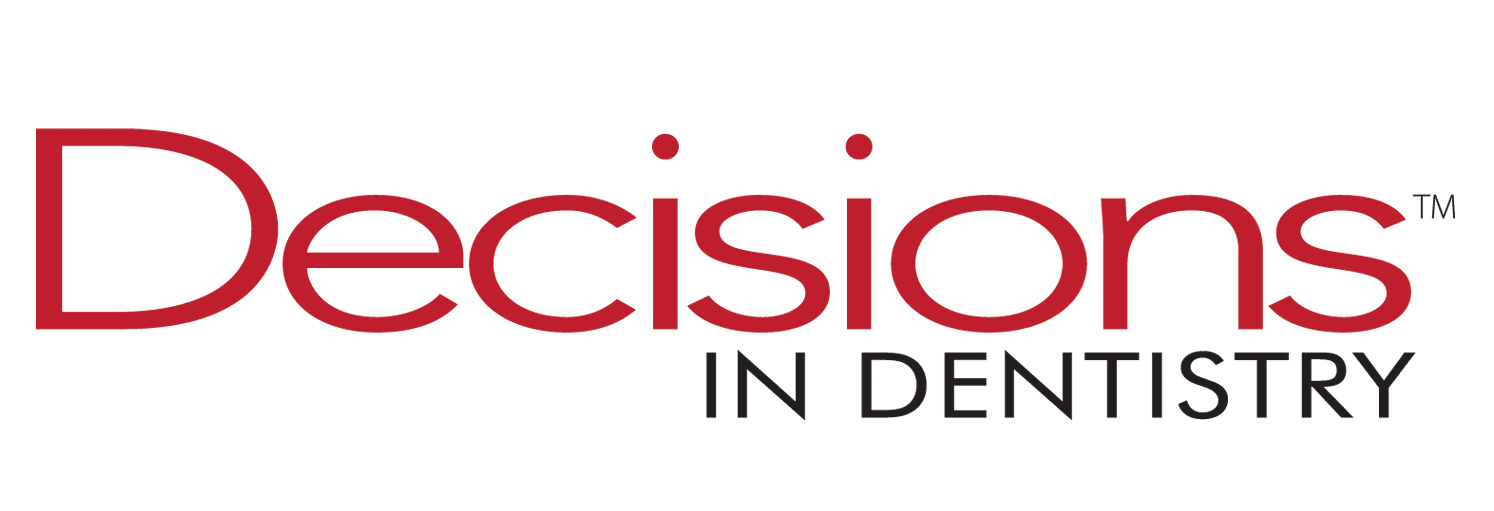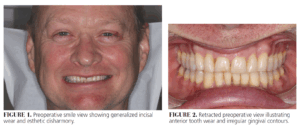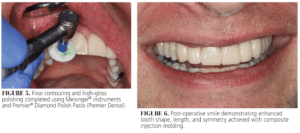Enhancing the Smile With Composite Injection Molding
A digitally guided injection molding workflow delivers esthetic, no-prep results in a post-orthodontic patient.
Minimally invasive dentistry continues to reshape how clinicians approach esthetic restorative cases. Patients are increasingly requesting outcomes that preserve natural tooth structure while providing predictable, esthetically pleasing results. Composite injection molding has emerged as a reliable method to deliver highly detailed and natural-looking restorations with minimal or no preparation. Unlike ceramic veneers, which require tooth reduction, direct injectable composites allow clinicians to deliver conservative restorations while preserving healthy enamel. This case describes a digitally guided composite injection molding workflow to restore a post-orthodontic adult with esthetic concerns involving teeth #6–11.
Case Background
A 57-year-old man had recently completed orthodontic treatment but remained dissatisfied with the worn appearance of his anterior teeth. His chief complaint centered on short incisal length, irregular contours, and a smile that appeared unbalanced (Figures 1 and 2). Additionally, he expressed a strong desire to avoid any irreversible tooth preparation or permanent alteration of his enamel.
Clinical evaluation confirmed moderate incisal wear, slightly uneven gingival margins, and a generally favorable alignment thanks to prior orthodontic correction. The patient presented with excellent oral hygiene, stable occlusion, and no parafunctional habits, making him an ideal candidate for an additive restorative approach. Digital records were obtained, and a diagnostic wax-up was created to establish the new tooth proportions. These data points formed the basis of the digitally guided workflow and tray fabrication.
Surface and Tissue Preparation
One of the key challenges in this case was achieving harmonious gingival architecture to match the improved tooth shape. A diode laser (NV® PRO3, DenMat) was used to perform minor recontouring on the central incisors, improving the gingival zeniths and creating a more symmetrical frame for the final restorations. Next, the enamel was cleaned interproximally using abrasive strips (ContactEZ®, Directa Dental) to remove accumulated plaque and biofilm. A coarse sandpaper disc was then used to roughen the incisal edges. To further cleanse the bonding substrate, the teeth were air abraded with aluminum oxide using the PrepStart™ H2O (Zest Dental Solutions). These steps collectively optimized the enamel surface for predictable adhesion while maintaining the integrity of the natural tooth structure.
Adhesive Protocol
A total-etch technique was employed using 37% phosphoric acid, applied for 30 seconds to all enamel surfaces (Figure 3). After thorough rinsing and gentle drying, a universal adhesive (CLEARFIL™ Universal Bond Quick 2, Kuraray Noritake Dental) was applied, air-thinned until motionless, and then light-cured from both facial and lingual aspects. This ensured complete infiltration and polymerization of the adhesive layer, establishing a strong bond foundation for the subsequent injection phase.
Matrix Fabrication and Injection Technique
Digital scans were sent to Lammina, a division of Six Month Smiles, where Smile Simulation software was used to finalize the mock-up virtually. Once the design was approved, Lammina fabricated two clear matrix trays from a proprietary two-part acrylic with integrated injection ports.
The use of these trays not only simplified composite placement but also enhanced accuracy in reproducing the planned esthetic outcome. The first matrix was used to restore teeth #6, #8, and #10. MAJESTY™ ES Flow (Kuraray Noritake Dental), a highly filled flowable composite, was injected through the incisal ports, starting from the gingival margin and working in a controlled manner toward the incisal edges (Figure 4). The technique emphasized keeping the syringe tip immersed in the composite to avoid trapping air bubbles. Each restoration was light-cured for 40 seconds on both facial and lingual surfaces before removing the tray. After refining minor voids with direct composite and polishing, a second matrix was applied for teeth #7, #9, and #11 using the same technique. The oxygen-inhibited layer was then treated with OXYGUARD™ II (Kuraray Noritake Dental) to ensure complete polymerization and a durable surface finish.
Finishing and Polishing
Once both phases were complete, finishing was carried out using a fine diamond bur and a two-step polishing system (Meisinger® USA). A final polish with Premier® Diamond Polish Paste (Premier Dental) and a felt wheel achieved a high-gloss finish, blending the restorations seamlessly with the surrounding dentition (Figure 5).
The patient was extremely pleased with the natural look and feel of his restorations, noting that his smile looked better than ever (Figure 6). A new orthodontic retainer was made after completion of the case to accommodate the new incisal lengths, helping maintain stability and protect the restorations from potential parafunctional forces during sleep.
Discussion
Composite injection molding offers significant advantages in cases where patients refuse or cannot tolerate tooth reduction. Advances in highly filled flowable composites have overcome previous concerns about strength and wear resistance, allowing clinicians to deliver restorations that are not only esthetic but also durable under functional stresses.
Conclusion
Digital planning combined with laboratory-printed matrices improves procedural efficiency and consistency. This approach minimizes freehand sculpting and reduces operator fatigue while delivering highly reproducible results. Patients with stable occlusion and adequate enamel are ideal candidates for this technique, provided they understand maintenance requirements and the limitations compared to ceramics. When executed thoughtfully, injection molding can deliver results comparable to traditional veneer systems but without the irreversible sacrifice of tooth structure.
Kuraray America Inc
kuraraydental.com
800-879-1676
From Decisions in Dentistry. July/August 2025;11(4):26-27.





